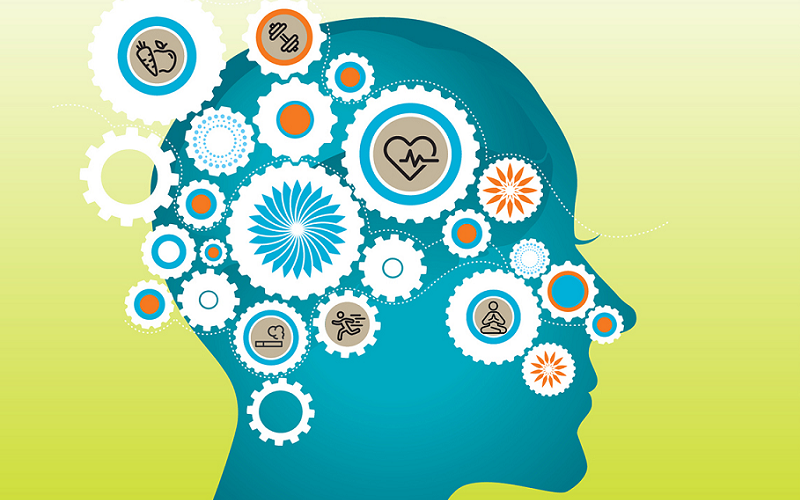
Behavioral change is a crucial aspect of personal development, affecting individuals at every stage of life. Whether it’s a child learning new habits, a teenager navigating social pressures, an adult striving for work-life balance, or a senior adapting to retirement, understanding how to effectively modify behavior is key to achieving a fulfilling and balanced life. Here we explore the principles of Mind Dynamics Coaching and its powerful strategies for promoting behavioral change across all ages. By setting clear goals, developing self-awareness, and implementing supportive techniques, Mind Dynamics Coaching offers practical tools to help individuals make lasting, positive changes in their lives.
Contents
- Introduction to Behavioral Change and Mind Dynamics Coaching
- Understanding Behavioral Change Across Different Age Groups
- Key Strategies for Facilitating Behavioral Change
- Mind Dynamics Techniques for Behavioral Change
- References
Introduction to Behavioral Change and Mind Dynamics Coaching
Behavioral change is essential for personal growth and well-being. It impacts every stage of life, from childhood to old age.
Explanation Of Behavioral Change
Behavioral change refers to the process of modifying habits, actions, and reactions to improve one’s quality of life. Understanding and implementing behavioral change is vital for personal development and achieving life goals.
Definition And Importance
Behavioral change involves altering one’s habits and actions to foster personal growth and improved well-being. It is important because it helps individuals overcome challenges, achieve goals, and lead more fulfilling lives.
Overview Of Behavioral Patterns
Behavioral patterns are established routines and actions that individuals perform regularly. Recognizing these patterns is the first step towards implementing effective behavioral change strategies.
Introduction To Mind Dynamics Coaching
Mind Dynamics Coaching is a comprehensive approach to personal development that combines various psychological and behavioral techniques. It aims to help individuals understand and modify their behaviors for better outcomes.
What Is Mind Dynamics Coaching?
Mind Dynamics Coaching is a methodology that uses cognitive, emotional, and behavioral strategies to facilitate personal growth and change. It focuses on helping individuals understand their thought patterns and behaviors to achieve desired outcomes.
Benefits Of Mind Dynamics Coaching In Behavioral Change
Mind Dynamics Coaching offers numerous benefits for those seeking behavioral change. It provides personalized strategies that address individual needs, promotes self-awareness, and fosters lasting positive change. Through tailored coaching sessions, individuals can learn to set realistic goals, develop new habits, and maintain long-term improvements.
Understanding Behavioral Change Across Different Age Groups
Behavioral change manifests differently at various stages of life. Each age group faces unique challenges and requires tailored strategies to effectively modify behavior.
Behavioral Change In Children
Children are in a constant state of growth and development, which makes behavioral change both critical and complex. Understanding the developmental stages and common issues they face is essential for fostering positive habits early on.
Developmental Stages And Challenges
Children go through several developmental stages, each with its own set of challenges. From learning basic motor skills to developing social interactions, recognizing these stages helps in implementing appropriate behavioral change strategies.
Common Behavioral Issues
Common behavioral issues in children include temper tantrums, difficulty following instructions, and social anxiety. Addressing these issues with patience and appropriate techniques can lead to positive behavioral adjustments.
Behavioral Change In Adolescents
Adolescents experience significant physical, emotional, and social changes. These transitions often result in unique behavioral challenges that require specific strategies to address effectively [1].
Identity Formation And Social Influence
During adolescence, individuals undergo a process of identity formation. They are heavily influenced by their social environment, which can lead to behaviors driven by peer pressure and the desire for social acceptance.
Coping With Stress And Peer Pressure
Adolescents often face high levels of stress due to academic demands, social relationships, and future planning. Developing coping strategies to manage stress and resist negative peer pressure is crucial for positive behavioral change.
Behavioral Change In Adults
Adults often seek behavioral change to improve their personal and professional lives. Understanding habit formation and the balance between work and personal life is key to achieving desired changes.
Habit Formation And Change
Habit formation in adults involves repetitive behaviors that become automatic over time. Changing these habits requires identifying triggers, setting realistic goals, and maintaining consistency.
Managing Work-Life Balance
Maintaining a healthy work-life balance is a common challenge for adults. Implementing time management techniques and prioritizing self-care can lead to improved overall well-being and effective behavioral change.
Behavioral Change In Seniors
Seniors face unique challenges related to aging and life transitions. Understanding these challenges and promoting mental and physical well-being are essential for fostering positive behavioral changes in this age group.
Adapting To Life Transitions
Life transitions such as retirement, loss of loved ones, and declining health can significantly impact seniors’ behavior. Providing support and resources to navigate these transitions can facilitate positive changes.
Promoting Mental And Physical Well-Being
Promoting activities that enhance mental and physical well-being is crucial for seniors. Encouraging regular exercise, social interaction, and mental stimulation can lead to healthier behaviors and improved quality of life.

Key Strategies for Facilitating Behavioral Change
Effective behavioral change requires a combination of strategies tailored to individual needs. These strategies are fundamental in guiding individuals toward successful and lasting change.
Setting Clear And Achievable Goals
Setting goals provides direction and motivation for behavioral change. Clear and achievable goals help individuals focus their efforts and measure their progress.
Importance Of Goal Setting
Goal setting is crucial because it gives individuals a clear target to aim for. It provides a sense of purpose and helps maintain motivation throughout the change process [2].
Techniques For Setting Effective Goals
Effective goals should be Specific, Measurable, Achievable, Relevant, and Time-bound (SMART). This framework ensures that goals are clear and attainable, increasing the likelihood of success.
Developing Self-Awareness
Self-awareness is the foundation of behavioral change. Understanding one’s thoughts, emotions, and triggers can lead to more effective strategies for modifying behavior.
Understanding Personal Triggers
Identifying triggers that lead to undesirable behaviors is essential. This awareness allows individuals to develop strategies to avoid or manage these triggers.
Mindfulness Practices For Self-Awareness
Mindfulness practices such as meditation and reflective journaling can enhance self-awareness. These techniques help individuals stay present and observe their thoughts and emotions without judgment.
Building A Supportive Environment
A supportive environment is critical for sustaining behavioral change. Encouragement from family, friends, and peers can provide the motivation needed to maintain new behaviors.
Role Of Family And Friends
Family and friends play a significant role in supporting behavioral change. Their encouragement and understanding can make the process more manageable and enjoyable.
Creating A Positive Environment
Creating a positive environment involves removing obstacles and adding elements that support the desired behavior. This can include organizing one’s space, setting reminders, and seeking out supportive communities.
Implementing Positive Reinforcement
Positive reinforcement is a powerful tool for encouraging desired behaviors. By rewarding positive actions, individuals are more likely to repeat them.
Reward Systems And Incentives
Establishing a reward system can motivate individuals to stick to their behavioral change goals. Rewards can be small and simple, such as a treat or a break, or larger incentives for significant milestones [3].
Encouraging Positive Behaviors
Consistently encouraging positive behaviors helps reinforce them. Verbal praise, recognition, and tangible rewards can all contribute to maintaining new, healthy behaviors.
Mind Dynamics Techniques for Behavioral Change
Mind Dynamics Coaching employs a variety of techniques to facilitate behavioral change. These methods are designed to help individuals recognize and alter negative patterns, develop emotional intelligence, and manage stress effectively.
Cognitive Behavioral Techniques
Cognitive behavioral techniques focus on identifying and changing negative thought patterns that lead to undesired behaviors. These techniques are practical and actionable, making them accessible for individuals seeking to make positive changes.
Identifying And Changing Negative Thought Patterns
The first step in cognitive behavioral techniques is to identify negative thoughts that contribute to problematic behaviors. Once these thoughts are recognized, individuals can work on replacing them with more positive and constructive ones.
Practical Exercises And Activities
Practical exercises, such as keeping a thought journal or engaging in role-playing scenarios, help individuals practice new ways of thinking. These activities reinforce positive thought patterns and support lasting behavioral change.
Neuro-Linguistic Programming (NLP)
Neuro-Linguistic Programming (NLP) is a psychological approach that explores the connections between neurological processes, language, and behavioral patterns. NLP techniques can help individuals modify their thoughts and behaviors to achieve specific goals.
Basics Of NLP
NLP involves understanding how language and mental processes influence behavior. By recognizing these connections, individuals can learn to change their internal dialogue and responses to various situations [4].
Applying NLP In Daily Life
NLP can be applied in daily life through techniques such as visualization, affirmations, and reframing. These practices help individuals maintain a positive mindset and encourage constructive behaviors.
Emotional Intelligence Development
Developing emotional intelligence is essential for understanding and managing one’s emotions and relationships. High emotional intelligence contributes to better decision-making and improved interpersonal interactions.
Recognizing And Managing Emotions
Recognizing and managing emotions involves becoming aware of one’s emotional responses and learning how to regulate them. Techniques such as deep breathing and mindfulness can aid in this process.
Enhancing Interpersonal Relationships
Enhancing interpersonal relationships requires effective communication and empathy. Developing these skills helps individuals build stronger connections and fosters a supportive environment for behavioral change.
Stress Management And Relaxation Techniques
Stress management is a critical component of behavioral change. Effective stress reduction techniques can prevent negative behaviors triggered by stress and promote overall well-being.
Techniques For Reducing Stress
Techniques for reducing stress include meditation, progressive muscle relaxation, and time management strategies. These methods help individuals maintain a calm and focused mindset.
Importance Of Relaxation In Behavioral Change
Relaxation plays a significant role in behavioral change by allowing the mind and body to recover and reset. Regular relaxation practices can enhance mental clarity and support the maintenance of positive behaviors.
References
[1] Mindfulness and Behavior Change
[2] Unlocking Brain-Behavior Dynamics: Next-Generation Approaches and Methods
[3] Linking brain, mind and behavior
[4] Behavioral Change Models

